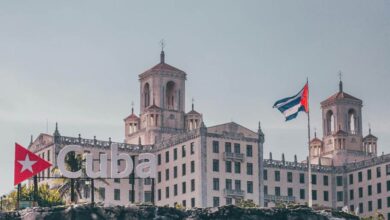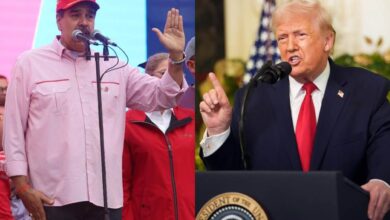Latin America has always danced: Which of your favorite dances have been around for centuries?
These are three typical dances that we inherited from indigenous cultures

Through the different forms of artistic expression, such as dance, we can observe that millenary heritage that is part of the subcontinent's identity. Dance is passion, freedom, movement and a form of corporal expression that reflects the social and political processes of each country.
Leer en español: Latinoamérica siempre ha bailado: tres bailes típicos que heredamos de culturas indígenas
Currently there are approximately 522 indigenous peoples in Latin America and the Caribbean, according to National Geographic in Spanish. Among the countries with "more diversity of indigenous peoples" are Brazil, Colombia, and Mexico. According to NatGeo, in Brazil there are 241 villages "that represent a population of 734,127 people. Colombia, with 83 (1,392,623 inhabitants) is the second country with the most number of towns, followed by Mexico with 67 (9,504,184 people)". This is an ancestral population that makes Latin America and the Caribbean a diverse region in traditions and customs.
What are the dances that are preserved?
Carimbó, Brazil
The carimbó is a typical Brazilian dance considered intangible heritage of the country since 2014. Like many traditional dances of this nation, the Carimbó is a mixture of African and indigenous cultures. According to Culture Trip, "in the north of the State of Pará in Brazil, Carimbó is classified as a dance and an artistic expression of the Amazonian culture. Typically, women wear long, colorful skirts with large floral motifs and men and women dance together in a circle to the beat of a few simple but rhythmic instruments". This is one of the many traditional dances that are native to this country that shape their cultural identity that seeks to be preserved.
Maestro Manoel of the Uirapuru group explained to CartaCampinas of Brazil that the Carimbó is a culture that "comes from many years, from our ancestors, from our Indian brothers, we inherit the land and we have to carry out that demonstration, reviewing for our children and grandchildren, and for that we have to work with public policies".
Read also: Latin blood runs through their veins: artists who define what it means to be from Latin America
Jarabe Tapatío, Mexico
The Jarabe Tapatío, considered the national dance of Mexico, is a dance that was born in Guadalajara, Jalisco. Rolando Rivera Falcón, researcher of the Mexican traditions and member of the Ballet Folclórico of the University of Guadalajara (UdeG), explained to the newspaper Excelsior that the origin of the Tapatío Jarabe "goes back to the native dances but there is not much material for the arrival of the Spaniards who destroyed codices and deities that had nothing to do with Christianity". However, Falcón said that this dance is "a legacy of the indigenous, European and African race after the arrival of the slaves in the Gulf of Mexico".
Jarabe Tapatío, also known as the sombrero dance, is the result of miscegenation in Mexico. In addition, at first it was characterized as an expression of rebellion against colonialism, after it was banned by the authorities of the time to consider dance movements "sexually suggestive and even challenging to Spanish rule." According to donquijote.org, this offered "an opportunity for dancers eager to make a statement about social freedom and political independence to subtly challenge the colonizers."
Cumbia, Colombia
Cumbia is one of the most representative rhythms of Colombia, as well as a folkloric dance typical of the region. Like the countries of Latin America and the Caribbean, cumbia "is a mixture of European, African and indigenous cultures". According to colombia.co, this traditional dance was born on the Colombian Caribbean coast. In the beginning "it was an African courtship dance that evolved with the incorporation of African, European and indigenous instruments, and indigenous dance steps", explains the website.
Guillermo Carbó Ronderos, Colombian composer, explained in Semana magazine that "the origins of the cumbia dissipate in the pluricultural encounter that took place in these fertile lands. Its epicenter is disputed between Afro-Colombian people, who attribute it as a 'cradle of stone' in Cartagena, and indigenistas, who place it in the country of the Pocobuy, Loba region and the surroundings of El Banco, Magdalena". In any case, it is evident that the cumbia is also, as a rhythm or as a dance, the result of the processes of miscegenation in the country. The cumbia is a "symbol of national identity", said Carbó Ronderos.
LatinAmerican Post | Diana Rojas Leal
Translated from "Latinoamérica siempre ha bailado: tres bailes típicos que heredamos de culturas indígenas"





